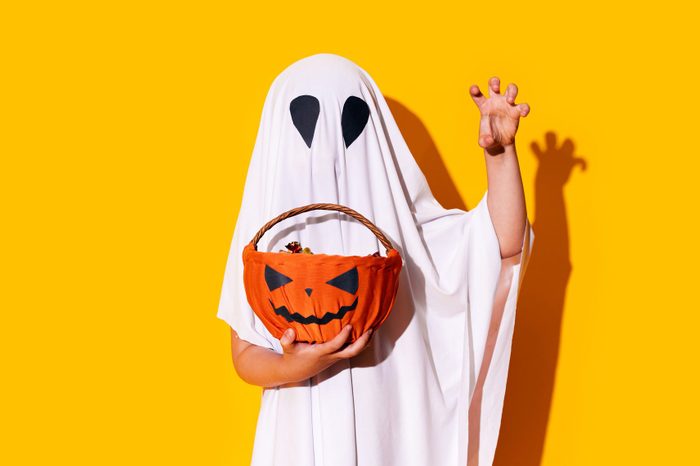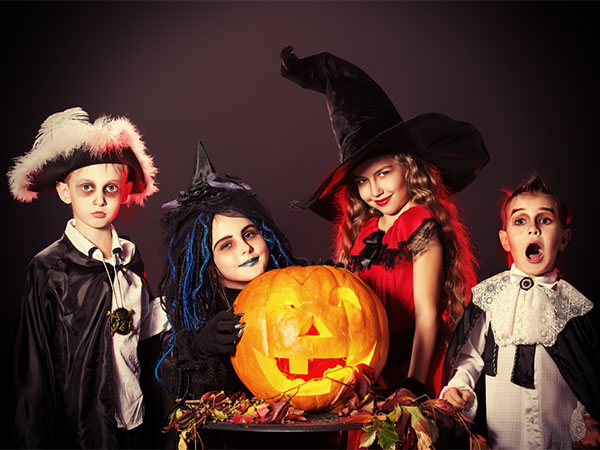Halloween 101: Origins, Traditions, and Safety Tips
Halloween is a popular holiday celebrated on October 31 in many countries around the world. It is a time of fun, fright, and festivities, but also a time to be aware of some potential dangers and hazards. In this article, we will explore the origins, traditions, and safety tips of Halloween, and how you can enjoy this spooky season with your family and friends.

The Origins of Halloween Halloween has its roots in ancient Celtic festivals, such as Samhain, which marked the end of the harvest season and the beginning of the dark half of the year. The Celts believed that on this night, the boundary between the worlds of the living and the dead became blurred, and spirits could roam the earth. They lit bonfires, wore costumes, and offered food and drinks to appease the restless souls.
Later, as Christianity spread in Europe, some of these pagan customs were incorporated into the Christian observances of All Saints’ Day (November 1) and All Souls’ Day (November 2), which honored the saints and the departed faithful. The evening before All Saints’ Day became known as All Hallows’ Eve, or Halloween.
Halloween came to America with the Irish and Scottish immigrants in the 19th century, and gradually became a secular celebration of costumes, candy, and entertainment. Today, Halloween is one of the most popular holidays in the United States, Canada, Ireland, and other parts of the world.
The Traditions of Halloween Halloween is a time to express your creativity and imagination through dressing up, decorating, and having fun. Some of the most common Halloween traditions include:

- Trick-or-treating: Children go from house to house in costumes, asking for treats such as candy or money. They usually say “trick or treat”, meaning that they will perform a prank if they do not receive a treat.
- Carving pumpkins: People carve faces or designs into pumpkins or turnips, and place candles or lights inside them. These are called jack-o’-lanterns, and they are supposed to ward off evil spirits.
- Attending parties: People gather with their friends or family to enjoy food, drinks, games, music, and dancing. Some parties may have a theme or a costume contest.
- Watching horror movies: People enjoy watching scary movies or shows that feature ghosts, vampires, zombies, witches, or other supernatural creatures.
- Visiting haunted attractions: People seek thrills by visiting places that are designed to scare them, such as haunted houses, corn mazes, or graveyards.
Halloween is also celebrated differently in different cultures and countries. For example:
.jpg?width=1200)
- In Mexico and other Latin American countries, people celebrate Día de los Muertos (Day of the Dead) from October 31 to November 2. They honor their deceased loved ones by creating altars with photos, flowers, food, and drinks. They also visit cemeteries and decorate graves with candles and offerings.
- In Japan, people participate in the Kawasaki Halloween parade, which attracts over 100,000 spectators every year. They wear elaborate costumes and march through the streets of Kawasaki city.
- In Ireland, where Halloween originated, people celebrate Samhain with bonfires, games, and fortune-telling. They also eat traditional foods such as barmbrack (a fruitcake with hidden objects that predict one’s future) and colcannon (a dish made with potatoes and cabbage).
- In China, there are several festivals that are celebrated around the same time as Halloween, such as the Hungry Ghost Festival (in August), the Qing Ming Festival (in April), the Double Ninth Festival (in October), and the Spring Festival (in January or February). These festivals involve paying respect to ancestors and spirits by burning paper money or offerings.
The Safety Tips for Halloween Halloween can be a lot of fun, but it can also pose some risks for children and adults alike. Here are some safety tips to keep in mind when you celebrate Halloween:

- Choose costumes that are fire-resistant, fit properly, and do not obstruct vision or breathing. Use face paint instead of masks if possible, and test it for allergies before applying it. Avoid contact lenses that change your eye color or shape as they can damage your eyes.
- Use flashlights, glow sticks, or reflective tape to make yourself visible in the dark. Stay on sidewalks and cross streets at corners or crosswalks. Look both ways before crossing and watch out for cars.
- Never enter a stranger’s home or car while trick-or-treating. Stay with your group and follow a familiar route. Have an adult accompany young children or set a curfew for older ones.
- Check all candy before eating it. Throw away any unwrapped or suspicious items. Be aware of any food allergies and avoid eating too much sugar at once.
- Drink responsibly if you attend a party where alcohol is served. Do not drink and drive or get into a car with someone who has been drinking. Have a designated driver or use a taxi or ride-sharing service.
- Be respectful of other people’s property and feelings. Do not vandalize, steal, or harm anyone or anything. Do not wear costumes that are offensive, inappropriate, or culturally insensitive.
Halloween is a wonderful opportunity to celebrate the season, express yourself, and have fun with your loved ones. By following these tips, you can ensure that your Halloween is safe and enjoyable for everyone. Happy Halloween!
Share this content:



